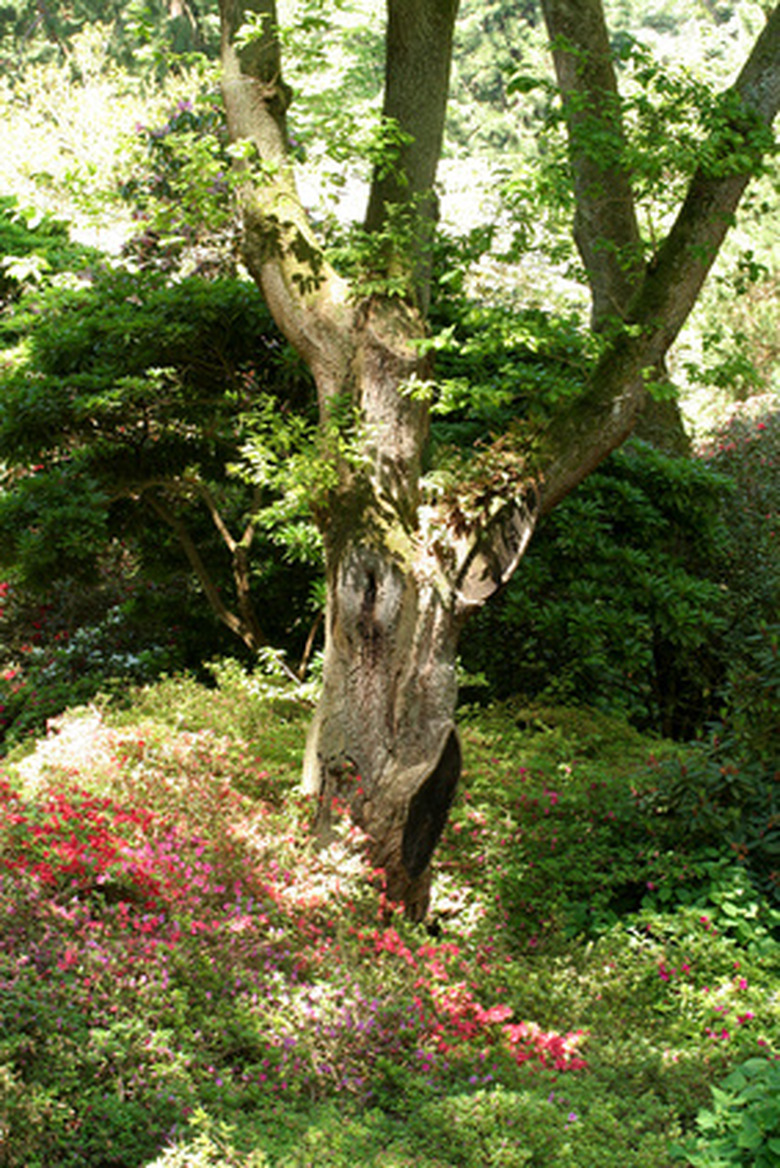Fragrant Shade-Loving Plants
If you're coping with shady locations, you may think your options are limited enough without having to consider the fragrance of the plants you choose. Many shade-tolerant plants, however, will bring fragrance as well as color and form to those lackluster shady areas. Using a few of them adds a haunting dimension to a shade garden's design.
Sweet Woodruff
Sweet woodruff (Galium odoratum), a mat-forming perennial native to Europe, northern Asia and Africa, is hardy to minus 30 degrees Ft. Up to 12 inches high in 18 wide, it thrives in moist to wet areas. Its square stems have lance-like, deep-green fragrant foliage. Crushed leaves, according to the Missouri Botanical Garden, release a scent of newly mown hay. Even more aromatic, dried leaves are frequent potpourri ingredients.
- If you're coping with shady locations, you may think your options are limited enough without having to consider the fragrance of the plants you choose.
- Many shade-tolerant plants, however, will bring fragrance as well as color and form to those lackluster shady areas.
In April and May, the plants also have loose clusters of small, fragrant white blossoms. Plant sweet woodruff in partial to full shade and well-drained, averagely moist to wet soil. Use it in rock gardens, or as a shady area ground cover or edging. It spreads quickly by self-sowing. In the best conditions, it may become invasive. Rotary mowing will check its spread.
Black Cohosh
Black cohosh (Actaea racemosa) is a buttercup family perennial hardy to minus 30 degrees F. Reaching up to 6 feet high and 4 feet wide, it has feathery deep-green foliage. In June and July, its thin stems have 1- to 2-foot spikes of fragrant, cream-colored flowers. Flowers on plants in shade will bend toward sunlight, and may need staking. Black cohosh may develop leaf spot or rust.
- In April and May, the plants also have loose clusters of small, fragrant white blossoms.
- Flowers on plants in shade will bend toward sunlight, and may need staking.
Use black cohosh, recommends the Missouri Botanical Garden, where its leaves will provide garden interest. Slow to establish, it makes the greatest impact in massed in groups. Put it in partial to full shade with organically rich, averagely moist soil. Foliage suffers in dry locations. Provide shelter in areas with strong wind.
Partridge Berry
A perennial groundcover, partridge berry (Mitchella repens) stands 3 inches high with a 1-foot spread. Hardy to minus 40 degrees F, it's native to bluffs, moist woodlands and stream banks through much of the eastern United States. White-veined, glossy dark green leaves provide winter interest. Between May and July, according to the Missouri Botanical Garden, partridge berry has small, fragrant, pink-tinged, white funnel-shaped blooms. Berries maturing to bright red in late summer frequently persist all winter.
- Use black cohosh, recommends the Missouri Botanical Garden, where its leaves will provide garden interest.
- A perennial groundcover, partridge berry (Mitchella repens) stands 3 inches high with a 1-foot spread.
This shade lover rarely experiences pest or disease problems. Use it in shady areas of rock gardens or borders, under trees, or around ponds. Slow to spread, it may not be the best choice for large sites. Give it full shade and well-drained, fertile, averagely moist soil. It does best with regular watering.
